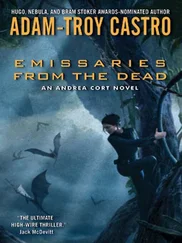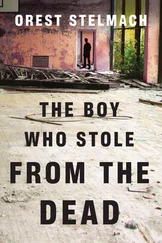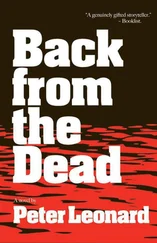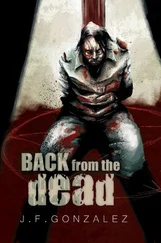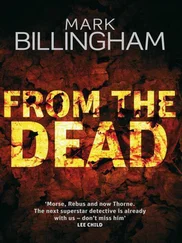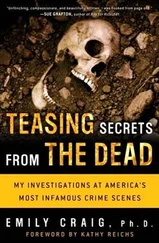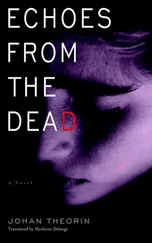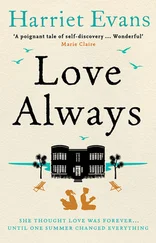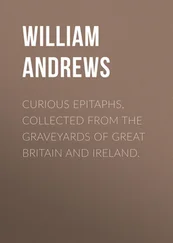Sam was a beloved figure throughout the state and was nationally known for his dedication, honesty, and skill. The brutality-and the stupidity-of his assassination sent shock waves through the nation and the world, with his death receiving coverage from as far away as England, Poland, and Russia. More than two thousand mourners turned out for his funeral, and the Kentucky state legislature adjourned for a full day in his honor.
Whenever I think of Sam, I remember the day we were working a case we called “River Legs,” after a pair of decomposed legs that some canoeist had found floating down the Rockcastle River. Sam, Coroner Alan Stringer, and I went down to the river with several deputies to look for the rest of the remains.
The Rockcastle was a real wilderness river, deep down in a ravine, with high banks on each side. Sam and Alan flew reconnaissance, looking for other body parts in Sam's Huey helicopter, a craft he'd learned to fly so he could patrol his large rural county for signs of marijuana growing. I was out on a huge rock at the river's edge, flat on my belly, peering into the clear water with my binoculars-when suddenly I looked up in alarm. Sam and Alan had been flying low, of course, but now they were too low, the helicopter flying straight at me at what seemed an incredible rate. I later learned that Alan, who'd never been in a helicopter before, had shifted his weight unthinkingly, resting his thigh on the helicopter's collective, which controls its flight. With Alan's weight on the collective, Sam couldn't pull out of the deadly trajectory-and from what I could see, the helicopter was going to kill me for sure. But they flew so close in their open craft that I could look right into Sam's eyes-and then I wasn't frightened anymore. I just knew by the flicker in his stare that Sam would put that helicopter in the river before he let it hit me. And at the last possible instant-I mean, that thing was blowing river water into my eyes-Sam reached over and somehow pulled Alan off the collective. The craft whizzed right on by me. I was all right.
“Sorry to scare you, Doc,” Sam said when we all met up on solid ground later that day.
“I wasn't scared,” I answered, and we both knew I was telling the truth.

Losing Sam has given me a little bit of insight into what the relatives of homicide victims go through. I wasn't sure I could make it through his funeral. I wouldn't have missed it, though-and I'm so glad I went. My law enforcement colleagues welcomed me like a sister, and I knew once and for all that I was finally part of their community. That, I guess, was Sam's last gift to me.
A single death is a tragedy, a million deaths is a statistic.
– JOSEPH STALIN
I'VE ALWAYS LIKED to work jigsaw puzzles. I like looking at the picture on the box and then trying to make hundreds of oddly shaped pieces add up to one coherent image. I enjoy that chaotic period at the beginning when all the little bits look alike and you have to keep a sharp eye out for the ones with straight edges that go around the border, or the light-blue ones that are probably the sky. And I get an enormous amount of satisfaction from putting in the final piece so that the picture is finally complete.
I've often thought that my work as a forensic anthropologist resembles a four-dimensional jigsaw puzzle. A series of events happened: Somewhere back in time someone was murdered or died violently, or maybe even died peacefully, leaving behind a few bones or some body parts. Days, weeks, or even years later, I come along and try to reconstruct the picture on the box, using whatever pieces I can find: a bone, a skull, a broken plant, a pile of ashes, perhaps a personal possession or two. I'm looking at the evidence in front of me, and I'm also looking back in time, trying to figure out how I can make the pieces fit, hoping that the picture I put together matches the events that really happened. When I start out, it's chaos. But when I finish, with any luck, it all makes sense.
Of course, some cases are more like that than others. I think that the most absorbing and intricate jigsaw puzzle I ever worked on was probably the case that began on April 21, 2000.

It started, as they all do, with a phone call. I carry a pager with me twenty-four hours a day every single day of the year, and I never really know what's in store for me when it goes off or when the phone rings. It might be someone with a quick question, a detective calling about some animal bones he just found. Or perhaps it's a complicated request that I can nonetheless answer from the comfort of my home or office, maybe from a coroner concerned about recovering victims' remains after an accidental house fire. Sometimes I'll get an emergency call that requires me to rush to a scene, a frantic 911 operator telling me that a plane has just gone down in some remote rural area or a county official alerting me to incinerated occupants of a motor vehicle crash-and-burn on the interstate. It can wreak havoc on my personal life. I've had to cancel Saturday night dates, leave the grocery store with a half-filled basket, and even pull a partly cooked roast out of the oven. If I'm in Kentucky, I'm on call. The only respite I can count on is to leave the Commonwealth for an occasional vacation, when I finally get to leave my pager turned off for a while.
Usually, though, I'm ready and willing to respond to the crime scene. My calls most often come from a coroner in one of Kentucky 's 120 counties, asking me to come help out with a skeleton or decomposed human remains that have just been found in his or her jurisdiction. On this peaceful Saturday night, the call was from Campbell County Coroner Dr. Mark Schweitzer. Apparently two young boys fishing in the Ohio River late that afternoon had discovered the half-buried bones of a human skeleton.
By the time he called me, Mark had already been out to the site and confirmed that these were indeed human remains. He'd noticed, too, that the bones still seemed to be wearing some pants and a long-sleeved shirt.
“The clothing was a faded workman's blue,” Mark told me. “But nobody's been reported missing lately. That area is kind of a hobo jungle-food cans scattered all over the place, lots of cheap liquor bottles, some plastic bags and dirty blankets. So the police think the bones belonged to some derelict who simply washed up onto the bank of the river and decomposed there, maybe a few months ago.”
The Fort Thomas Police Department was already on the scene, Mark went on, with Detective Mike Daly in charge. Daly was pretty new to this type of investigation, having just been promoted to detective about six months ago. This was his first case of skeletal remains, and he was eager to prove that he could resolve this matter quickly and definitively.
“So,” Mark concluded, “Daly and I figured we'd just bring those bones right down to your office.”
“Don't you dare!” I said as playfully as I could. “I hope you haven't forgotten what I taught you.” I tried to keep my tone friendly and patient, though at my end of the phone line I was rolling my eyes in exasperation. What is it about bones that makes people want to pick them up? Coroners who would never dream of disturbing other types of evidence seem to think nothing of gathering skeletal evidence and blithely removing it from the scene. Even experienced police investigators who know perfectly well that they need to see the crime scene exactly as the criminal left it don't quite understand why I, too, have to view the evidence in context.
Читать дальше



